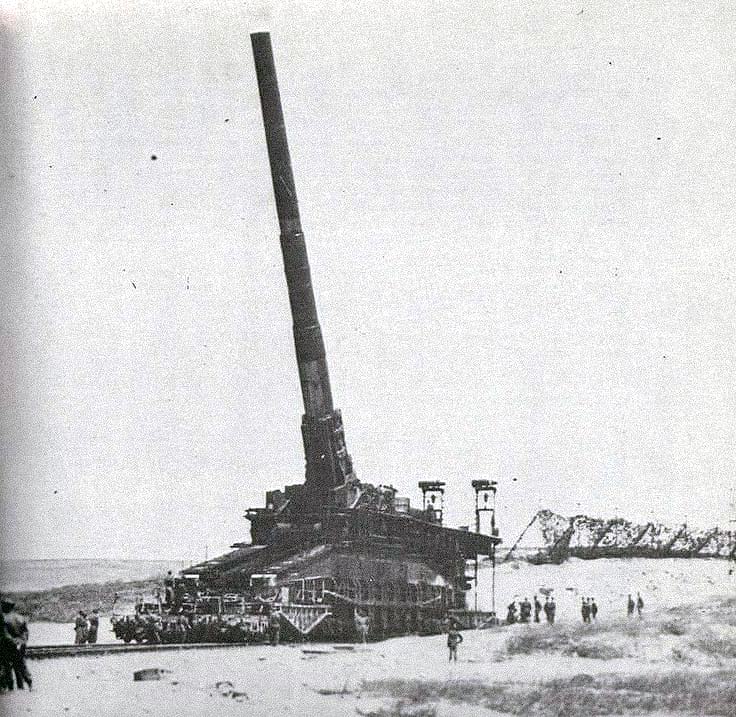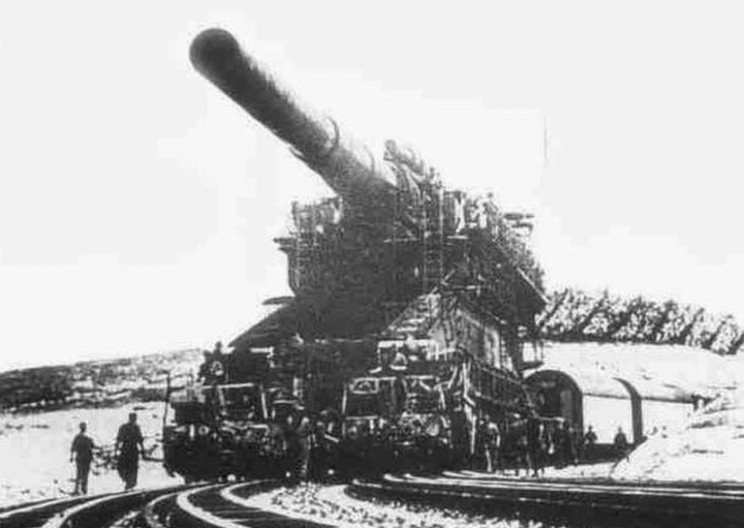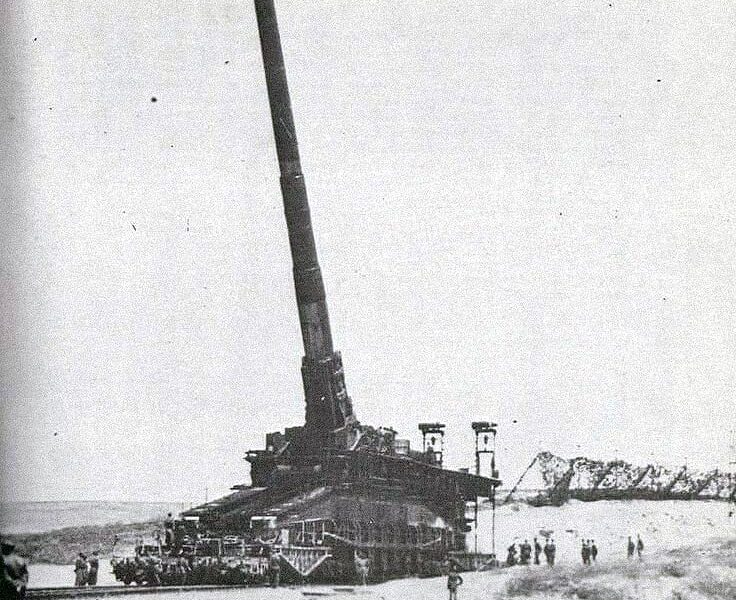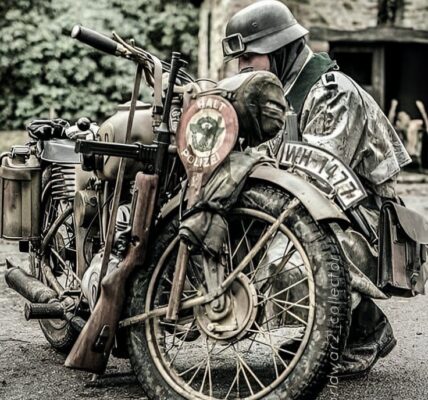
Railway gun Schwerer Gustav in a rare photo, probably sometime in 1942 in Sevastopol, although this information cannot be 100% confirmed.
The “Schwere Gustav” was the heaviest mobile artillery piece ever built and the largest rifled weapon ever used in combat. It weighed almost 1,350 tons and could fire 7-ton projectiles to a distance of 47 kilometers.
Originally designed for use against the French Maginot Line, the gun wasn’t operational until late 1941. Its only known use was in 1942 during the Siege of Sevastopol, when it fired 47 rounds, notably destroying an ammunition magazine. Schwerer Gustav was subsequently moved to near Leningrad, where it spent the winter of 1942/43 unused. Toward the end of the war, the gun was destroyed by the Germans to protect it from enemy fire. However, parts of it were eventually found and examined by the Allies.
A sister gun, the Dora, was also built and reportedly stationed west of Stalingrad in August 1942. However, it never saw action there and was withdrawn when the Soviets threatened to encircle it. However, there are also reports claiming the Dora never saw any combat or even never existed, but was simply another name for the Schwerer Gustav.
All in all, Schwerer Gustav did not achieve nearly the desired success, primarily due to the complicated logistics of transport and assembly. It took 250 men three days to prepare the gun, and another 2,000 men were needed to lay the tracks and carry out the excavations. In addition, two anti-aircraft battalions were needed to protect Schwerer Gustav from Allied aircraft—as it was an easily identifiable target. The mammoth structure was transported by a 1.5-kilometer-long train with 25 locomotives. In total, it took weeks for the gun to be operational.






